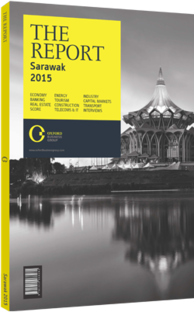OBG talks to Michael Manyin Jawong, Minister of Infrastructure Development and Communications

Interview: Michael Manyin Jawong
What progress has been made in recent years on the construction of the Trans Borneo Highway, and what will be its immediate economic effects?
MICHAEL MANYIN JAWONG: The Sarawakian portion of the Trans Borneo Highway will be about 972.8 km in length and be divided into two phases during construction. The highway route will pass through all of the major cities in Sarawak and link the state’s entire economic backbone. The first phase will run from Miri to Kuching and onward to Sematan at the far western tip of the state, while the second phase will focus on the sections from Miri to Lawas in the east and from Sematan to Tanjung Datu in the west along the border with Indonesia.
According to the current plan, the first phase will be completed in 2021 and the second phase about one or two years later. The decision to break down the construction into smaller packages will help contractors complete the project within the given timeframe of five years, which is quite short for such a large undertaking. In our experience, there are plenty of local construction companies that are competent and capable, and thus to a large extent it will be Sarawakian companies that will carry out the project.
The major driving factor to accelerate the development of the highway project is that the current roads are not up to standard and have direct economic effects on the state. Once completed, this project will result in significantly shortened journey times for commuters, and the quality of roads will be visibly improved. Most importantly, we expect it to reduce the transport costs for goods, which will directly result in lower prices for the goods themselves, affecting the entire population. This change will particularly benefit the investors present at the Samalaju Industrial Park.
How will the development of infrastructure for the Sarawak Corridor of Renewable Energy (SCORE) boost investment and benefit current tenants?
MANYIN: The centre of economic activity in SCORE at present is the Samalaju Industrial Park, but there are other areas of focus elsewhere along the corridor. At the moment, only a single carriageway road exists connecting the city of Bintulu with Samalaju. This will doubtless be our next target area. While the road is only about 62 km long, transforming it from a single into a dual carriageway will reduce the commute time to only about 20 minutes. The Ministry of Infrastructure Development and Communications is therefore initiating the project as one of our top priorities.
Another focus is enhancing connectivity to Mukah, which serves not only as headquarters for the state agency in charge of overseeing SCORE, the Regional Corridor Development Authority, but also as one of the coming growth nodes within SCORE as a whole. A RM230m ($70m) project is currently under way to construct a road from Bintulu to Mukah, including two bridges. As for the ports servicing the area, we expect both the Samalaju Industrial Port and the Tanjung Manis Integrated Port to play a major role in improving infrastructure and reducing transport costs.
What are the government’s main priorities in terms of enhancing connectivity to rural areas?
MANYIN: When Sarawak gained independence its connectivity was very poor, with less than 5000 km of roads. Today, we have a total of about 30,000 km if you combine federal, state and local council roads. Regarding rural connectivity, the ministry has conducted intensive research together with engineers, district officers and residents to determine the investment needed to connect every remaining village and longhouse in Sarawak. The studies indicated that we would need about another 5000 km of roads to connect every resident. To date, the focus has been on building roads in the most densely populated areas, since the remaining areas have a low density and require an outsized investment to connect. Now, however, the criteria for connectivity include social responsibility, not solely economic considerations. To this end, 500 km of rural roads have been identified for development in the near term.
You have reached the limit of premium articles you can view for free.
Choose from the options below to purchase print or digital editions of our Reports. You can also purchase a website subscription giving you unlimited access to all of our Reports online for 12 months.
If you have already purchased this Report or have a website subscription, please login to continue.

